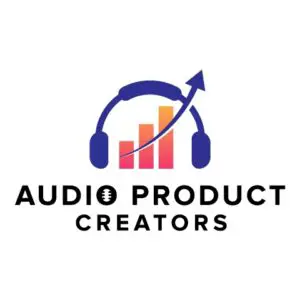Studio monitors and headphones are necessary to listen back to what we record and produce in our studios. There are plenty of options to choose from, which offer great quality, accuracy, and endurance.
User headphones and speakers, gaming, or hands-free sets are not suitable for professional use in audio production. All the work done with them will reflect a fake sound, and that can seriously affect your reputation as a musician, producer, composer, or voice-over narrator.
Best Headphones for all Types of Audio Products
My recommended brands and models comply with a wide frequency response (excellent at the very low range, and higher frequencies), and are between 47 – 250 ohms impedance (less power to achieve higher volume levels).

Beyerdynamic DT 770 PRO 250 Ohm Over-Ear Studio Headphones
Why I recommend it: They have a extremely good frequency range (5Hz – 35KHz). They are available at 80 ohms and 250 ohms impedance, with the most comfortable ear pads among all brands. You can become addicted to listening to everything with these headphones.
Compared to the competition: If you use the 250 ohms model directly on laptops or computers, you may find the volume low, and will need a headphone amplifier, but if you use them connected to an audio interface, they will sound absolutely great.

Why I recommend it: Excellent good frequency response range (10Hz – 20Hz), 63 ohms, they feel a little tighter than the Beyerdynamic DT770, but they are an industry standard to monitor all kinds of audio projects, very popular for YouTubing, Vlogging, film, TV, and voice-over audio products.
Compared to the competition: They are a very good option under the $100 range, but you may need extra ear pads after some time.

AKG K240 Studio Semi-open Pro Studio Headphones
Why I recommend it: They have an excellent frequency response (15 Hz – 25KHz), a low impedance of 55 ohms, and their cable is detachable. I’m a big fan of AKG products, and I still use my first set, purchased in 2003. If treated well, they can last a lifetime.
Compared to the competition: These headphones have great quality which is not common in other brands. The detachable cable is a mini XLR, very easy to replace when the original one gets worn out. They have had a very positive reputation in the music industry for decades and are considered an industry standard.

Audio-Technica ATH-M30x Professional Studio Monitor Headphones
Why I recommend it: Really good frequency response range (15 Hz – 20KHz), 47 ohms impedance, comfortable ear pads that won’t need replacement as early as with most brands nowadays, they are light and foldable, which is just great.
Compared to the competition: It’s difficult to find a competitor at the same price and quality, but in matters of these two factors, they may sound pretty similar to the AKG K240.
Studio Monitors Need to Comply with Four Main Requirements:
- A 5″ woofer cone, as a minimum
- Preamplified (just connect your interface directly to the main monitor)
- 80W power at least
- Neutral and flat sound to tell you the truth in the mixing and mastering stages

JBL Professional 305P MkII Next-Generation 5-Inch 2-Way Powered Studio Monitor
Why I recommend it: These monitors are a great option under the $300 range for the pair. They have a total power of 82W, and a great frequency response between 43 Hz to 24 kHz. The Image Control Wave Guide is their exclusive feature which shaves the higher frequency response, designed to provide a broad sweet spot a and great level of detail.
Compared to the competition: In addition to having thousands of 5-star reviews, I think the direct competitor of these monitors is the Yamaha HS5. In case you need to keep a tighter budget, this is the best choice.

PreSonus Eris E5 XT 5.25″ Near Field Studio Monitor with EBM Waveguide (Single)
Why I recommend it: The pair is just $300 which makes them a great option for the price. the frequency response is 53 Hz to 22 kHz, and offers a total power of 80W. They are an improved version of the famed Era Studio monitors. They provide a better level of detail in the mixing stage and a wider stereo image that represents a bigger sweet spot (you won’t have to sit too close to them to get a correct stereo image).
Compared to the competition: If you have already been a PreSonus customer, with smaller and more basic monitor models, you will get a great impression with this set.

Yamaha HS5 Powered Studio Monitor
Why I recommend it: These monitors start at $400 for the pair. Their frequency response is really good ranging from 54 Hz to 30 kHz, although they offer a total power of 70W, which is not a problem, to be honest.
Compared to the competition: A great feature that places them over the competition is their 3D space of sound feeling. They are an industry standard (they sound even better than the famed NS100) and that kind of reputation is not easy to obtain.
It’s important to apply an adequate acoustic treatment to the wall of your studio, to diminish a tiny bit of the middle frequencies.

